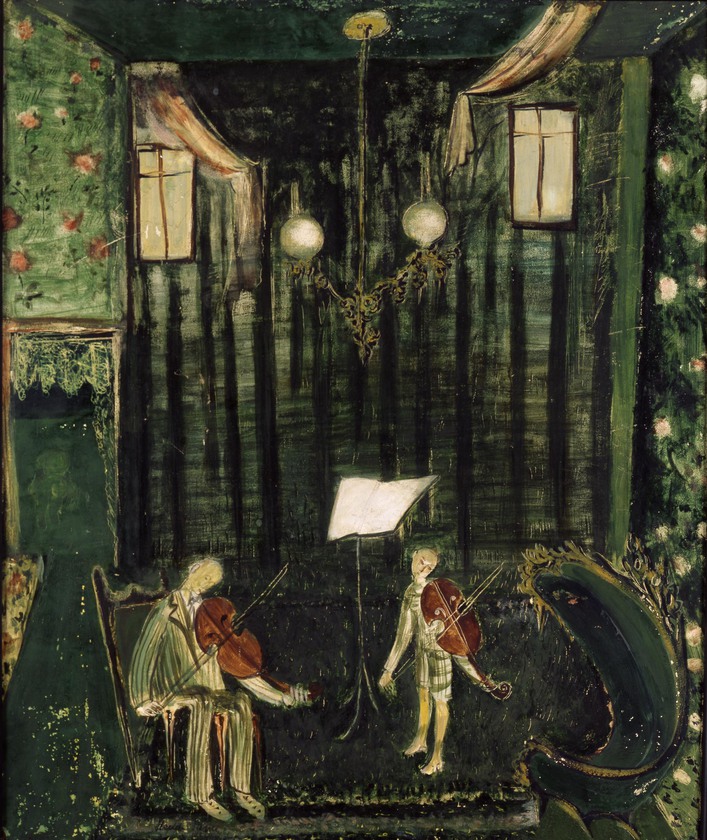Memory is a powerful force. This artist, Hedda Stern, painted memories of her home in Romania where she grew up and developed her passion for the arts. She covertly fled the Nazi Jewish round ups in 1940, going through Portugal, and made her way to New York City. Although she was able to escape the Nazis, she lost her home. To process and memorialize her past, she recreated her memories through her artwork.

See and Think
This oil painting on canvas, Violin Lessons, is an example of Stern reflecting on a childhood memory. The figures are Stern’s brother and her brother’s violin teacher, and the artwork shows the importance of music education in her family’s Romanian home.
Do
Materials Needed: Paper and something to write with (pencil, pen, etc.)
Creatively reflecting on our memories helps us process and reflect on our past. The human brain pieces together fragments to create a memory, and often the more time we take to reflect on past occurrences, the more fragments we pull together. In Violin Lessons, the violin plays a prominent role in Stern’s memory, as she has depicted a moment dedicated to mastering the instrument.
Like Stern and the violin, what object in your home can you use to pull together fragments of a memory? Take a few minutes and wander around your living space. Identify an object to explore. Find a pencil and paper and use the prompts below to guide your reflection:
- In one sentence describe your very first encounter with this object.
- Set a timer for 60 seconds. Quickly sketch this moment.
- What primary purpose does this object serve in your life?
- When you think about using this object for its primary purpose, is there one time that stands out? Make a list of adjectives to describe this instance.
- Take your time and sketch this recollection. Having trouble recalling the entire scene? Ask yourself about who, what, where, when, why, and how to jog your brain.